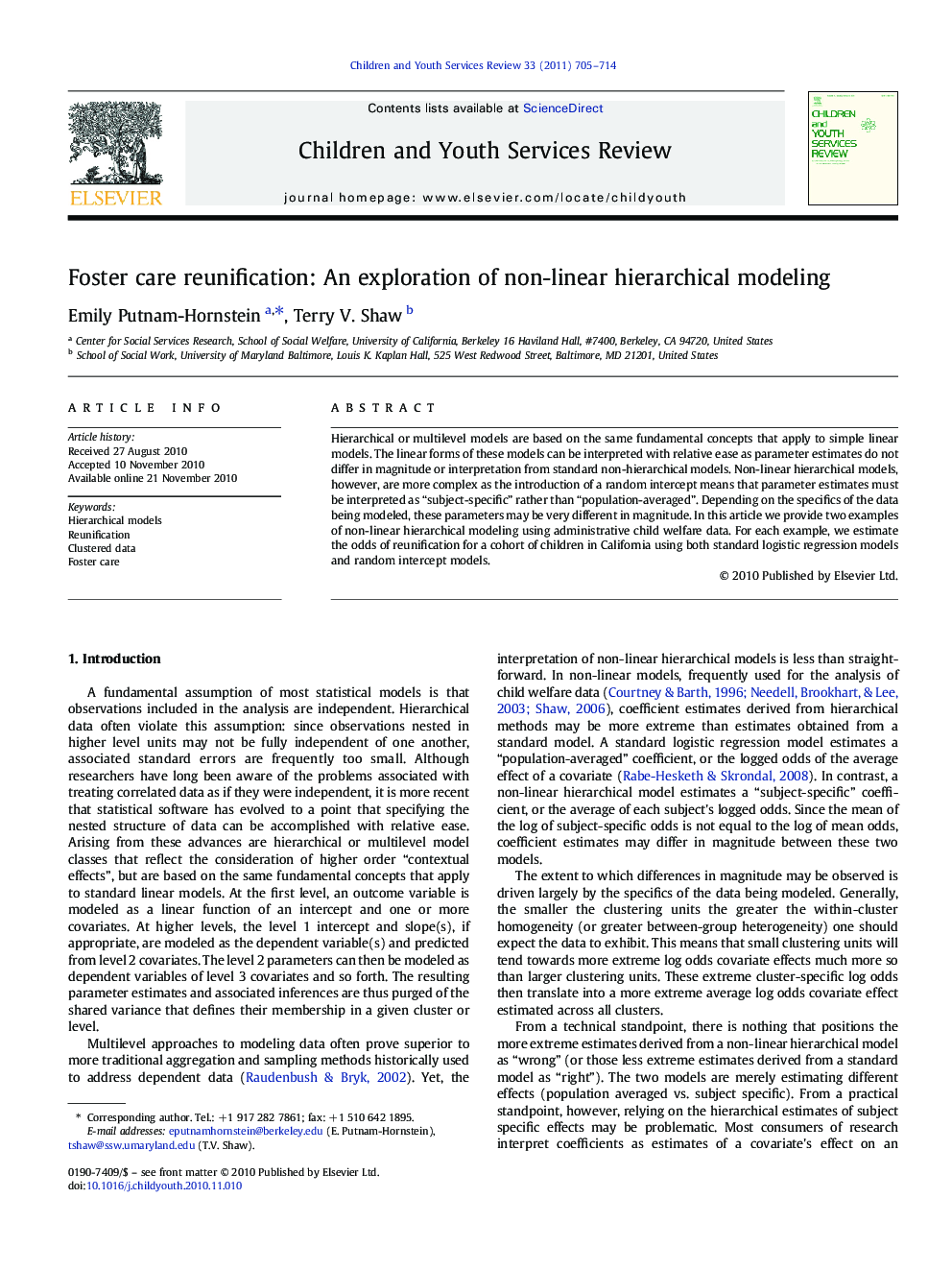| Article ID | Journal | Published Year | Pages | File Type |
|---|---|---|---|---|
| 346341 | Children and Youth Services Review | 2011 | 10 Pages |
Hierarchical or multilevel models are based on the same fundamental concepts that apply to simple linear models. The linear forms of these models can be interpreted with relative ease as parameter estimates do not differ in magnitude or interpretation from standard non-hierarchical models. Non-linear hierarchical models, however, are more complex as the introduction of a random intercept means that parameter estimates must be interpreted as “subject-specific” rather than “population-averaged”. Depending on the specifics of the data being modeled, these parameters may be very different in magnitude. In this article we provide two examples of non-linear hierarchical modeling using administrative child welfare data. For each example, we estimate the odds of reunification for a cohort of children in California using both standard logistic regression models and random intercept models.
Research Highlights► We provide two examples of non-linear hierarchical modeling. ► We first model reunification outcomes using families as the clustering unit. ► We then model reunifications using counties as the clustering unit. ► We discuss the interpretation of marginal versus subject-specific effects.
